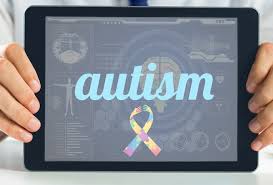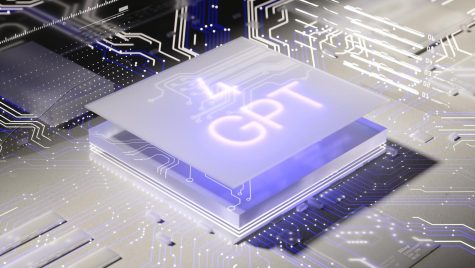Using technology to help children with autism speak

To many, autism is quite the mysterious disorder. It is, understandably, confusing to witness one person diagnosed with autism appear to function normally in everyday life, while another individual with the ‘same condition’ is severely handicapped- in some cases to the point where he/she must be washed, fed, and dressed with the assistance. We know that this because autism, or autism spectrum disorder, comes in a spectrum of symptoms of varying intensities, including difficulty with social interactions, repetitive behavior, and obsessive interests. However, many other attributes of autism spectrum disorder (ASD) remain up for speculation, including causes and effective courses of treatment. Additionally, ASD can be difficult to detect, especially in young children, whose social and language skills are not fully developed. Autism has also been shown to be on the rise; from 2000 to 2012, the rate of diagnosed ASD in American children has increased significantly– from 1 in 150 to 1 in 68. Local communities and school systems like FCPS are faced with the task of finding effective and efficient treatments to support these children and meet the rising demand. Currently, in Fairfax County Public Schools and in most schools systems across the country, speech pathologists work as part of an Individualized Education Program (IEP) team that includes teachers, special education teachers, specialists, and parents, to develop a program based on an individual student’s needs. This often involves trial-and-error methods where the therapists create custom treatments based on their observations; however, this is time-consuming, frustrating, and costly. What may have worked for one student will most likely not work for another and these approaches rely heavily on unscientific, “mostly unsupported” anecdotal evidence.
A promising alternative to the IEP method involves technology, since it is known that autistic children learn and respond better to technology. For example, 75 percent of students who were allowed to learn with a handheld device such as an iPad showed an increase in attention span and “their ability to interact socially”. Recently, schools have started to use language supplemental apps that help students build sentences and communicate by using pictures. The apps and technology that schools use, however, is not standardized because some argue that there is not enough scientific basis and research available to create a widely applicable technological aid. However, if schools follow the IEP with respect to technological aids for the autistic, a personalized device/application would have to be designed for each child’s needs, and school systems just do not have those resources.
Fortunately, a standardized treatment option may be possible since autistic children share key similarities, including similar symptoms such as “impairments in social communication, language, and related cognitive skills and behavioral and emotional regulation,” and “the presence of restricted, repetitive behaviors”. All children, even bilinguals/multilinguals, also learn languages in certain stages, or milestones that can be used to detect speech deficiencies. These milestones apply to ASD children as well, regardless of where they are on the spectrum. A standardized technological aid for ASD children should be useful for a majority of ASD patients as long as the technological implement helps a child bridge the gap between one stage to the next, such as between zero verbal communication to partial verbal communication. How can one be sure that generalized treatment is even possible in the spectrum of autism/speech delay? In a study, researchers compared the effectiveness of the Early Start Denver Model (EDSM), a generalized treatment plan that encompasses all young autistic children, to the effectiveness of a regular local treatment option. Like its name suggests, EDSM is an intensive early intervention on children (12-48 months) heavily focused on relationship-based therapy. More importantly, it has been shown to be effective for a wide-range of autistic children, varying in different abilities and learning styles. This is proof that a generalized treatment option (or technological aids) can be made with all young ASD patients in mind, instead of an individualized treatment plan for each student.
A standardized technological aid for ASD students should appeal to visual learning, specific examples, expressive facial expressions, and social context. Multiple anecdotes and researched-backed studies conducted on ASD have shown overlap in their results and provide the evidence needed to arrive at general, but accurate assumptions on the learning style of ASD children with speech delay. For example, individuals with autism have been shown to be heavy visual learners that easily comprehend specific concepts but struggle when understanding an abstract idea. Most autistic children are visual learners as it is “their strongest processing area,” and therefore, any assistive technology made should appeal to visual learning with a heavy emphasis on graphics. Secondly, a technological aid aiming to improve social interaction should contain appropriate facial expressions within a social context, so that children can observe and internalize proper social interactions and reactions. Experienced autism consultants such as Dr. Paul Rhea also note “the importance of thinking beyond words and sentences to the social functions of communication and language use when developing interventions”. The key to unlocking partial verbal communication is recognizing that language carries meaning and can be used to meet needs and initiate reactions from others, and an effective technological aid should also reflect this ideal. Through applications on mobile devices and other communication aids, technology has the potential to usher in a new era of ASD treatment philosophy and bring about a wave of rehabilitation options for the autistic.








Matthew Yang | Jun 17, 2017 at 8:39 pm
Interesting read. Autistic students and their learning impairments are seldom discussed. It is good to shed light on a topic that deserves more attention. It is necessary for administration in school boards to take into account ASD students and go out of their way to help them.